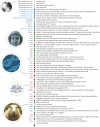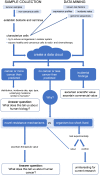What Animal Cancers teach us about Human Biology
- PMID: 34093847
- PMCID: PMC8171098
- DOI: 10.7150/thno.56623
What Animal Cancers teach us about Human Biology
Abstract
Cancers in animals present a large, underutilized reservoir of biomedical information with critical implication for human oncology and medicine in general. Discussing two distinct areas of tumour biology in non-human hosts, we highlight the importance of these findings for our current understanding of cancer, before proposing a coordinated strategy to harvest biomedical information from non-human resources and translate it into a clinical setting. First, infectious cancers that can be transmitted as allografts between individual hosts, have been identified in four distinct, unrelated groups, dogs, Tasmanian devils, Syrian hamsters and, surprisingly, marine bivalves. These malignancies might hold the key to improving our understanding of the interaction between tumour cell and immune system and, thus, allow us to devise novel treatment strategies that enhance anti-cancer immunosurveillance, as well as suggesting more effective organ and stem cell transplantation strategies. The existence of these malignancies also highlights the need for increased scrutiny when considering the existence of infectious cancers in humans. Second, it has long been understood that no linear relationship exists between the number of cells within an organism and the cancer incidence rate. To resolve what is known as Peto's Paradox, additional anticancer strategies within different species have to be postulated. These naturally occurring idiosyncrasies to avoid carcinogenesis represent novel potential therapeutic strategies.
Keywords: Peto's paradox; anticancer mechanisms; infectious tumour; non-human malignancies; paediatric cancer; transmissible cancer.
© The author(s).
Conflict of interest statement
Competing Interests: The authors have declared that no competing interest exists.
Figures





References
-
- Ferraris ZA, Ferraris VA. The Women of Salerno: Contribution to the Origins of Surgery from Medieval Italy. Ann Thorac Surg. 1997;64(6):1855–7. - PubMed
-
- Naumann DN, Bowley DM, Midwinter MJ, Walker A, Pallister I. High-Fidelity Simulation Model of Pelvic Hemorrhagic Trauma: The Future for Military Surgical Skills Training? Mi. Med. 2016;181(11-12):1407–9. - PubMed
-
- Jucker M. The benefits and limitations of animal models for translational research in neurodegenerative diseases. Nat Med. 2010;16(11):1210–4. - PubMed
-
- van Blijswijk J, Schraml BU, Sousa CRe. Advantages and limitations of mouse models to deplete dendritic cells. Eur J Immunol. 2013;43(1):22–6. - PubMed
Publication types
MeSH terms
Substances
LinkOut - more resources
Full Text Sources
Medical

